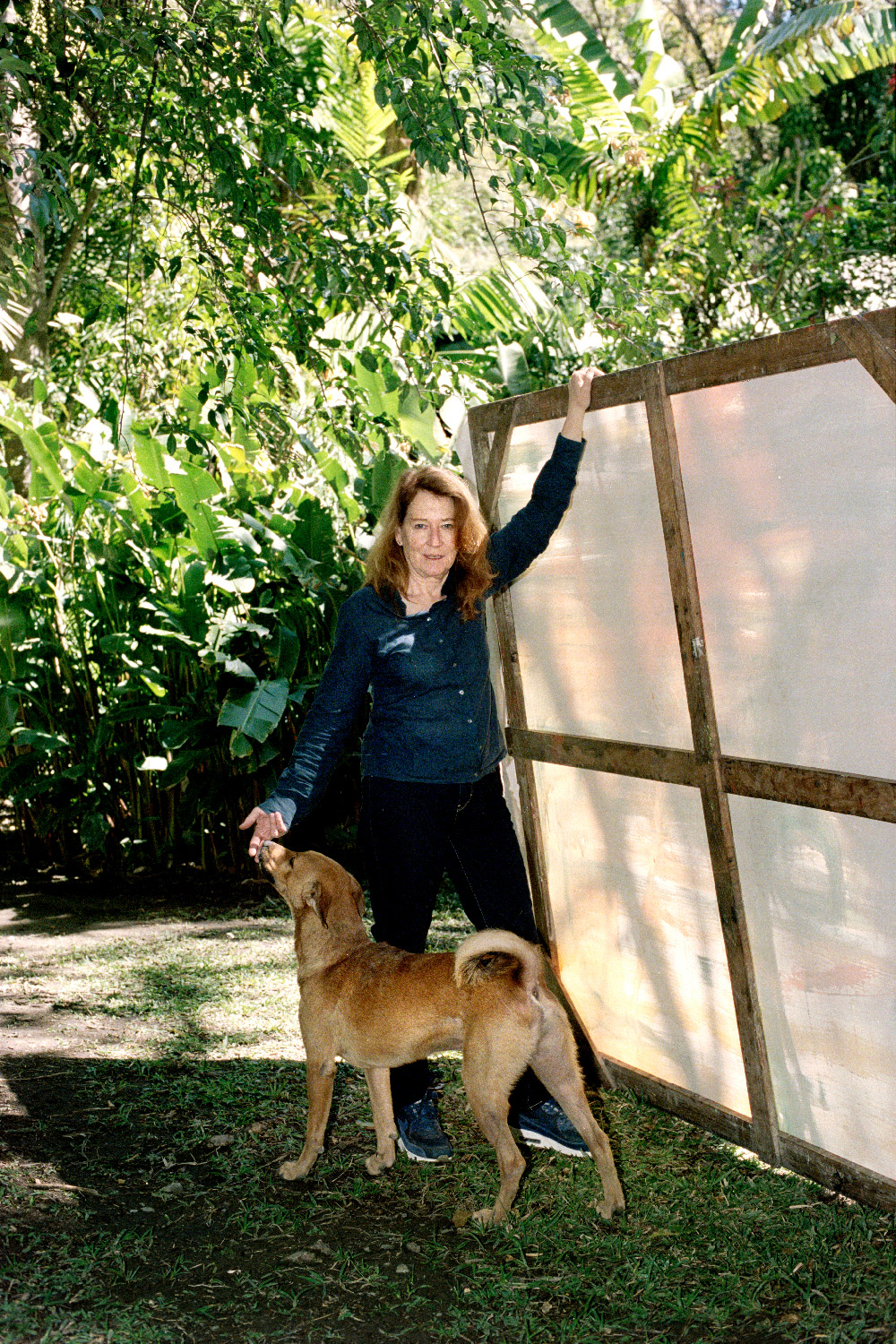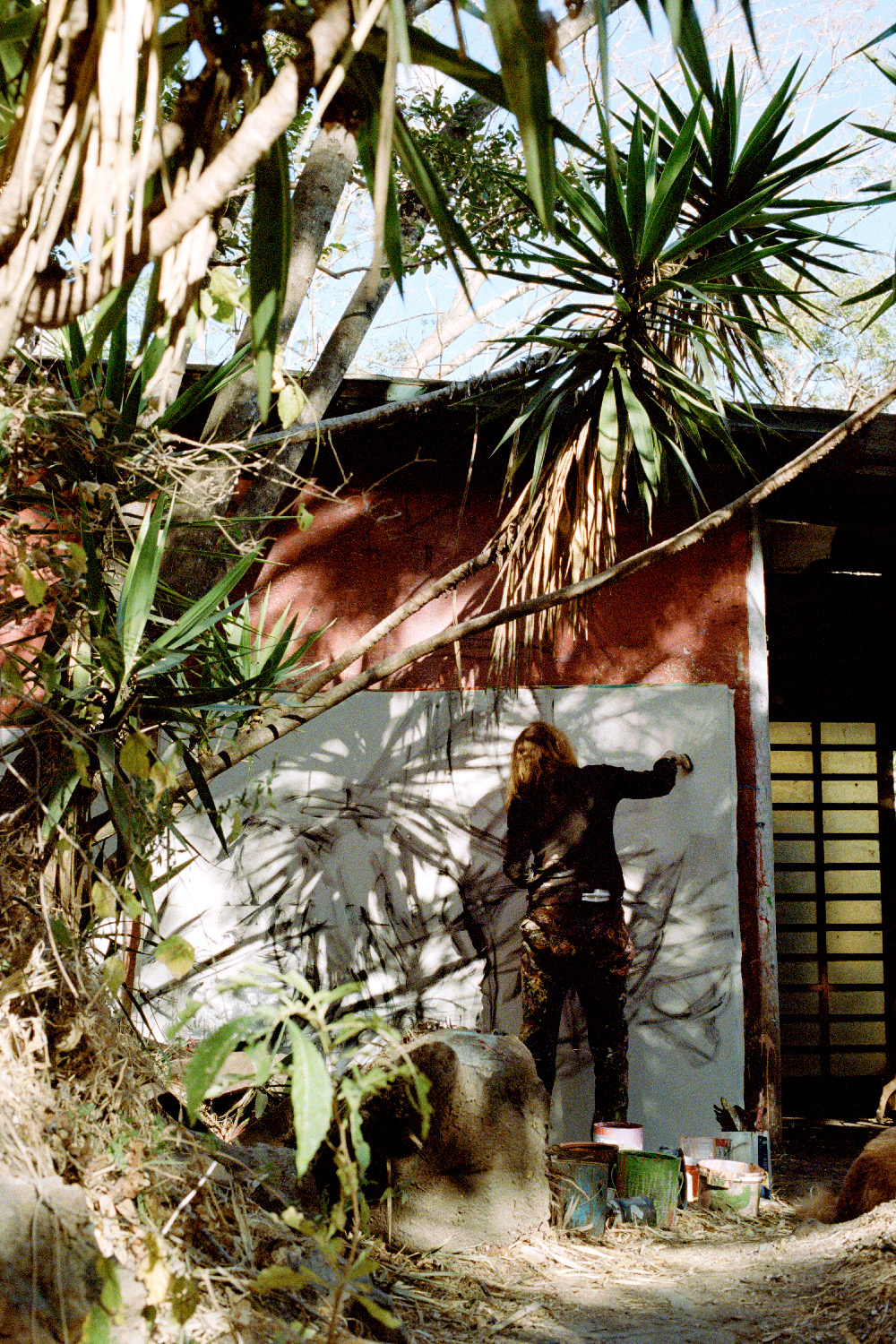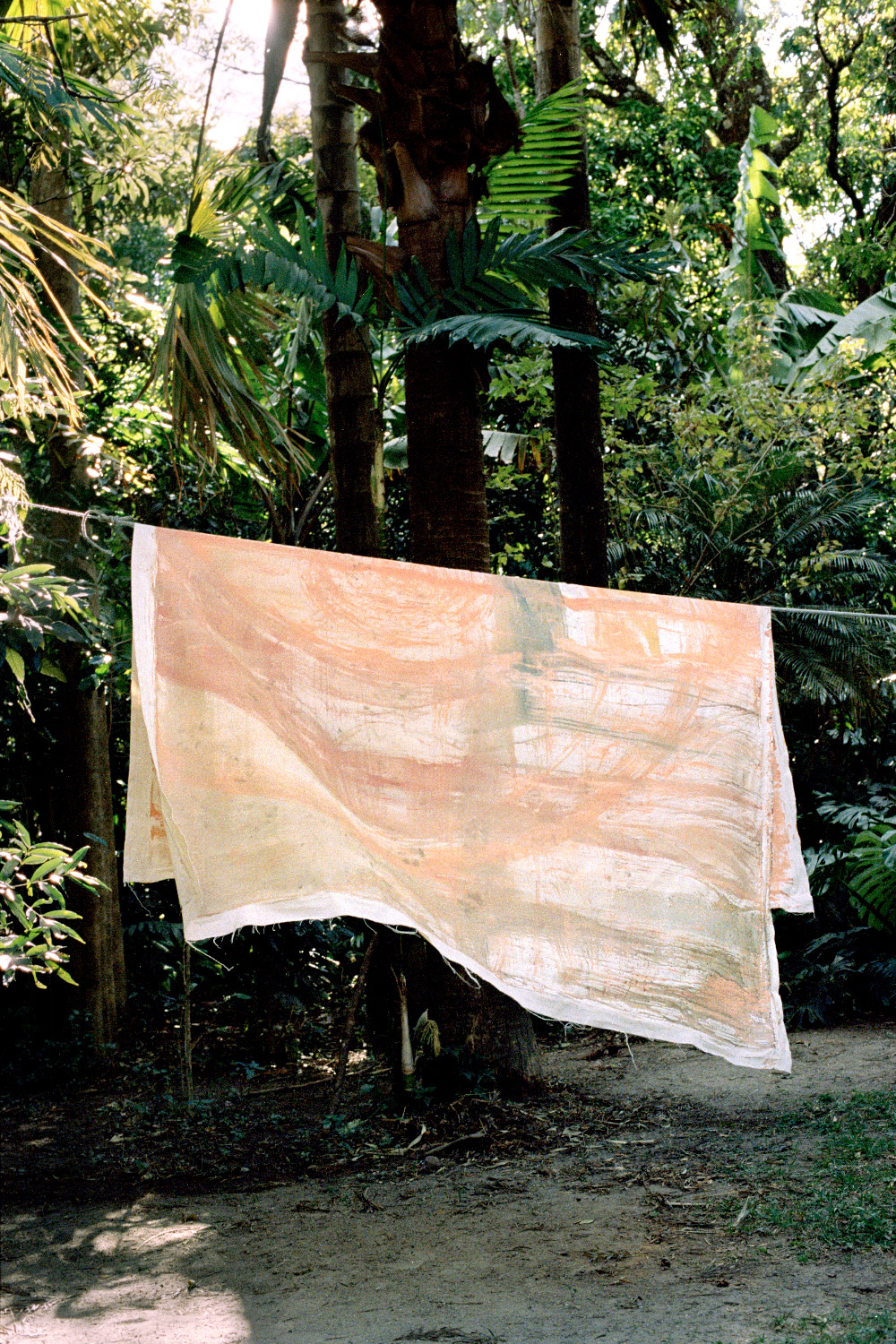'My state of mind is like a meditation, I am in an osmotic relationship to nature, which is changing all the time. I think that mobility is in my work too.' Vivian Suter
Vivian Suter
Jury statement
'As a member of the Swiss Federal Art Commission who is used to talking to artists, I confess that my encounter with Vivian Suter remains one of the most beautiful moments of art criticism I’ve ever experienced. Despite the frustration of being far apart and her extremely shy reserve, discovering her world, remote from all the usuallandmarks of a conventional artistic career, allowed me to enter the inner universe of a woman who made radical choices and never gave up until the art scene came to find her. (..) I’m convinced Vivian Suter is a strong model for the young generation, whose future is more than ever beset with doubts at the moment.' (Julie Enckell Julliard)
© BAK, Marie-Eve Hildbrand / Terrain Vague, Lausanne
Vivian Suter (born 1949 in Buenos Aires, lives in Panajachel (Guatemala))
Vivian Suter comes from a family of artists. Her great-grandmother was an artist, as was her mother Elisabeth Wild (1922–2020). Her mother painted the whole time Vivian was growing up. Until Vivian Suter was 13, the family lived in Argentina. Thereafter, in Switzerland, she graduated from the Kunstgewerbeschule in Basel where she attended painting classes and also studied sculpture, colour and writing. She had her first exhibition in 1972, at the Galerie Stampa in Basel. In 1981, the same year in which she received a Federal Art Scholarship, she was invited to put on an exhibition by Jean-Christophe Ammann, director of the Kunsthalle Basel at the time.
When Vivian Suter left Switzerland in 1983 following those initial successes, the art world was unable to comprehend why she had chosen to live her life in isolation, and more or less forgot about her. It was some time before she was rediscovered. In 2014, at the invitation of curator Adam Szymczyk, she returned to the picture surface and the Kunsthalle Basel: in the solo exhibition ‘Vivian Suter intrépida featuring Elisabeth Wild Fantasías 2’, she presented works from the preceding thirty years, along with selected collages by Elisabeth Wild. It was also Adam Szymczyk who, 45 years after her first trip to Documenta, presented her at the 14th edition in Kassel and in Athens. Until then, Vivian Suter had been working and refining her artistic practice far away from the art world on a former coffee plantation Guatemala. Freed from all those influences, she had developed her own distinctive language in which the moments of its creation are inscribed.
Nature was Vivian Suter’s studio all the while, and remains so today: ‘You have to climb to get there, through the plants and trees. You’re already immersed in the chirping of birds, the smell of the soil and fruits. You have to look for space in the forest in order to paint.’ (Julie Enckell Julliard)
The characteristic features of this specific production context can also be appreciated in her exhibitions, where the paintings mounted or suspended in space come together as pieces of a giant textile sculpture. Moving into it is an immersive experience that makes you feel as if you are travelling far away and experiencing the density of the rainforest.
Vivian Suter’s exceptional work is being honoured by two solo exhibitions this year: in June at the Museo Reina Sofía in Madrid and in November with ‘Vivian Suter Retrospective’ at the Kunstmuseum Luzern.








